It’s April 2020, the next stage of emission norms have arrived and have necessitated a slew of changes with regard to combustion engine optimization, exhaust emission control and even upgrading the quality of fuel.
Story: Jim Gorde
The beginning of the end seems to be upon us, and threatens to accelerate its approach if we, together as a planet, do not do our part to tone things down several notches. The time for fun and games is over and doomsday is the only visible future if we don’t drastically amend our ways. With great availability came greater consumption, and now, that very habituated consumption pattern is leading to our downfall. Serious threat from climate change is not just inevitable but vastly evident and world leaders, most of them anyway, are scurrying to make things right as best they can.
As one of the world’s largest economies and automotive markets, India must figure out a way to control pollution. While there are many factors detrimental to the environment, the mass usage of polluting vehicles remains a blatant example of the ignorance with which we operate on a daily basis. Add the chaotic traffic and zero traffic sense and these issues compound – making traffic jams the modern-day equivalent of gas chambers. These concerns must be addressed on a war footing.
While traffic sense, road manners and appropriate care of vehicles is the responsibility of road users, the government can enforce due norms to make things better. The jump to BS6 is one of those and with it, comes several changes and additions to vehicle, some of which will be effected for the very first time. Primarily, these are the quality of fuel and the inclusion of enhanced onboard diagnostics for the advanced emission control systems that will be employed on the new breed of two-wheelers (and three-wheelers). The introduction of emission limits on oxides of nitrogen (NOx), carbon monoxide (CO), and hydrocarbons (HC) for two-wheelers equivalent to proposed BS6 norms for light-duty gasoline (petrol) passenger vehicles aims to ensure that, on a per-kilometre-driven basis, the new BS6 two-wheelers will be as clean as four-wheelers passenger vehicles.
Classification
Before we get to the new norms, let’s review the categories that govern the limits, as laid out by the Automotive Research Association of India (ARAI). The BS6 norms apply to all two-wheelers produced from 1 April, 2020. All of them are divided into Classes 1, 2 and 3, two of which have sub-classes 2-1, 2-2 and 3-1 and 3-2.
Class 1 vehicles include all those with an engine capacity between 50 cc and 150 cc with a top speed capability of between 50 and 100 km/h. Classes 2 and 3 include all two-wheelers with an engine capacity above 150 cc, with sub-classes primarily based on top speed. The top speed, referred to as ‘Vmax’, for Class 2-1 is between 100 and 115 km/h, Class 2-2 is between 115 km/h and 130 km/h, Class 3-1 is 130 to 140 km/h and Class 3-2 is for those above 140 km/h. Each Class measures on a cold and hot cycle for more accurate figures.
Tests
The approval for BS6 depends on the results of a series of tests. These include five Type tests (I-V) as well as three more for ascertaining CO2 and fuel consumption, onboard diagnostics, and smoke opacity, the last of which applies only to vehicles with compression ignition (diesel) engines.
The Type I test is for gaseous pollutants and particulate mass, the latter of which applies to gasoline E5 (petrol with five per cent ethanol content) engines and not LPG, CNG or Hydrogen powered vehicles; remember these values are the same as those for four-wheelers.
The Type II test is for idle emission, that is, emission when the throttle is closed and the engine is at its idling rpm in both low and high states.
The Type III test is for crankcase emission. That’s a straight zero. Nothing is allowed, and the breather pipe needs to be connected to the intake system.
The Type IV test determines evaporative emission and consists of two sub-tests, hot soak loss and diumal loss, each for one hour. The limit is two grams per test.
The Type V test checks the durability of the anti-pollution devices using bench-ageing methods for determining deterioration factors and minimum distance requirements both following the Euro 6 precedents.
Norms
Particulates matter. Yes, and particulate matter will be a parameter under the microscope along with several stricter emission restrictions for the usual suspects. The new limits apply to all Classes and there aren’t different limits for different Class vehicles any more with the only exception being the Durability test. Here is what’s changed.
Carbon Monoxide (CO): 1,000 mg (1 g)/km for all Classes. That’s down from 1,403 mg/km for Class 1 and 2-1 and 1,970 mg/km for Class 2-2 to 3-2 that BS4 permitted.
Oxides of Nitrogen (NOx): 60 mg/km for all Classes, down from 390 mg/km for Class 1 and 2-1, 340 mg/km for Class 2-2 and 200 mg/km for Class 3-1 and 3-2.
Hydrocarbons (HC): 100 mg/km for all Classes. No more HC+NOx testing as with BS4. The new parameter is one of the new separate focal points introduced.
Non-methane Hydrocarbons (NMHC): 68 mg/km for all Classes. This is the second new specific parameter introduced.
Particulate Matter (PM): 4.5 mg/km. This is the third specific parameter introduced and applies only for vehicles with direct injection, where the fuel is injected directly into the cylinder during the intake stroke, as opposed to manifold, throttle-body or port fuel-injection systems. At present, there are no series-production two-wheelers that use direct injection.
Existing vehicles – those manufactured prior to April 2020 – would need to comply with the PUC (Pollution Under Control) norms last revised in October 2014. These provide for emission allowance of no more than three per cent carbon monoxide, and 3,000 ppm (parts per million) of total hydrocarbons.
Equipment
Meeting stringent emission norms calls for upgraded systems including emission control hardware and a fair amount of software, too. Hence, we will see the addition of a few more control devices. That essentially marks the end of the road for carburettors and we will see electronic fuel-injection on every two-wheeler above 50 cc; scooters and motorcycles included.
Onboard Diagnostics (OBD)
 Onboard diagnostics for all two-wheelers will be mandatory and many will see the inclusion of Stage I OBD from 1 April, 2020. This will bring in an electronic control unit and fuel-injection on all present models as none of the requirements for the new norms will possibly be met using carburettors.
Onboard diagnostics for all two-wheelers will be mandatory and many will see the inclusion of Stage I OBD from 1 April, 2020. This will bring in an electronic control unit and fuel-injection on all present models as none of the requirements for the new norms will possibly be met using carburettors.
OBD has the capability to identify the likely area of malfunction of the engine and emission control components or systems by means of fault codes stored in computer memory. During every driving event, a sequence of OBD checks are initiated to maintain safe driving, prevent subsequent damage and to minimise exhaust and evaporative emissions. Identified and confirmed faults are stored together with the corresponding operating conditions in the ECU memory and can be read out via a standardised diagnostics interface. They are indicated to the driver with the Malfunction Indicator Lamp (MIL). In case of a malfunction, prior-defined measures – default mode of operation and substitute values – may be taken.
The BS6 OBD requirements will be introduced in two phases, with preliminary OBD thresholds (BS6-1 OBD) including all vehicles manufactured on or after 1 April, 2020, with final thresholds (BS6-2 OBD) applicable from April 1, 2023.
Fuel-injection (FI)
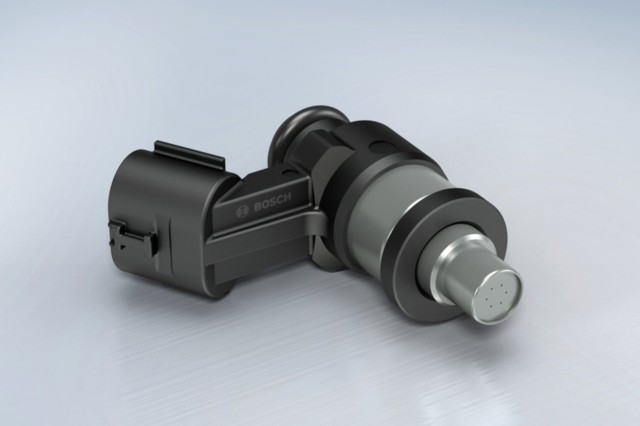 To meet strict emission norms, fuel has to be delivered at high pressure. A fuel pump is used to take care of this. Usually located directly below the tank, the fuel pump uses negative pressure to draw the fuel through the lines and the filter. The fuel filter, a simple device in the fuel system installed between the fuel pump and the carburettor or the fuel injection system, prevents impurities in the fuel from reaching and possibly clogging and damaging the fuel injectors. The injectors have the duty of injection the fuel at high pressure into a throttle-body at a precise time for more efficient and cleaner combustion, releasing more power and generating less waste gas in the process. It is electronically controlled to deliver the right amount of fuel depending on several factors including engine speed, throttle position, air density and flow rate. A solenoid valve is used to control the injection start and duration through what are multiple precise orifices to ensure fine fuel atomisation.
To meet strict emission norms, fuel has to be delivered at high pressure. A fuel pump is used to take care of this. Usually located directly below the tank, the fuel pump uses negative pressure to draw the fuel through the lines and the filter. The fuel filter, a simple device in the fuel system installed between the fuel pump and the carburettor or the fuel injection system, prevents impurities in the fuel from reaching and possibly clogging and damaging the fuel injectors. The injectors have the duty of injection the fuel at high pressure into a throttle-body at a precise time for more efficient and cleaner combustion, releasing more power and generating less waste gas in the process. It is electronically controlled to deliver the right amount of fuel depending on several factors including engine speed, throttle position, air density and flow rate. A solenoid valve is used to control the injection start and duration through what are multiple precise orifices to ensure fine fuel atomisation.
Crankshaft Speed Sensor
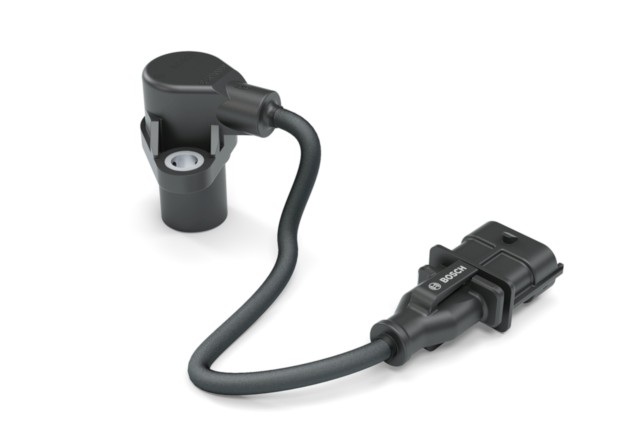 The crankshaft speed sensor measures the speed, position, and the direction of rotation of the crankshaft. Engine management uses this data to control injection and/or ignition timing. The sensor is a “Hall” or inductive sensor. The crankshaft is fitted with a pulse wheel which the sensor scans using a non-contact method. The reference point is determined by a missing element in the pulse wheel. Technically, the inductive or Hall sensor offers high signal accuracy, and works across wide ranges of temperature as well as engine speed.
The crankshaft speed sensor measures the speed, position, and the direction of rotation of the crankshaft. Engine management uses this data to control injection and/or ignition timing. The sensor is a “Hall” or inductive sensor. The crankshaft is fitted with a pulse wheel which the sensor scans using a non-contact method. The reference point is determined by a missing element in the pulse wheel. Technically, the inductive or Hall sensor offers high signal accuracy, and works across wide ranges of temperature as well as engine speed.
Knock Sensor
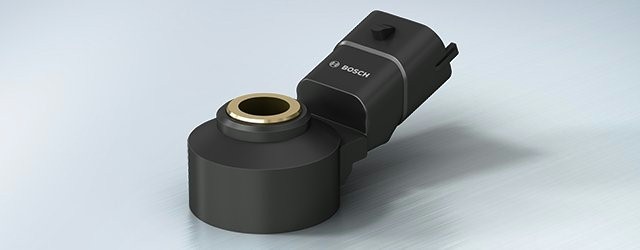 Controlled combustion is a prerequisite for efficient, low-emission engine operation. Knocking occurs when the air-fuel mixture self-ignites prematurely. Sustained knocking combustion causes damage primarily to the cylinder head gasket and cylinder head. Engine management can reduce the risk of knocking by setting a later ignition point. The aim, however, is to obtain the maximum energy yield from varying qualities of fuel by selecting an ignition point that is as early as possible. The knock sensor is mounted on the crankcase, measures the structure-borne noise using a piezoelectric measuring element, and identifies knocking by its higher sound frequencies.
Controlled combustion is a prerequisite for efficient, low-emission engine operation. Knocking occurs when the air-fuel mixture self-ignites prematurely. Sustained knocking combustion causes damage primarily to the cylinder head gasket and cylinder head. Engine management can reduce the risk of knocking by setting a later ignition point. The aim, however, is to obtain the maximum energy yield from varying qualities of fuel by selecting an ignition point that is as early as possible. The knock sensor is mounted on the crankcase, measures the structure-borne noise using a piezoelectric measuring element, and identifies knocking by its higher sound frequencies.
Digital Ignition Coil
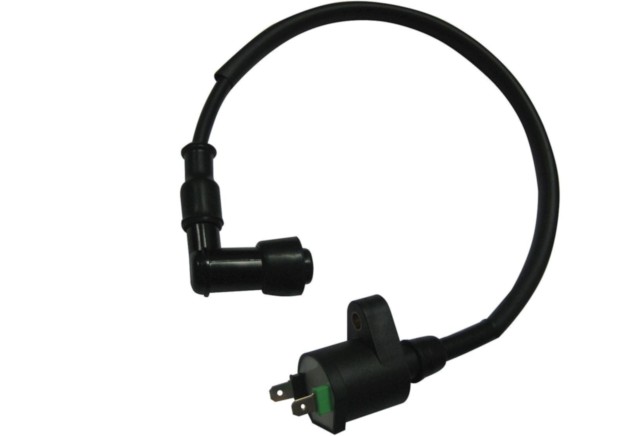 The ignition coil converts normal current to high-tension current. It is essentially a several-metre long winding of conducting wire meant to deliver high-tension current to the spark-plug with minimal losses. Older two-stroke engines ran ignition timing based on crankshaft rotation, whereas four-stroke bikes have it based on camshaft rotation. However, more modern bikes have done away with these systems and now have the high-tension coil in the spark-plug cap itself. This makes the system rely entirely on electronic control.
The ignition coil converts normal current to high-tension current. It is essentially a several-metre long winding of conducting wire meant to deliver high-tension current to the spark-plug with minimal losses. Older two-stroke engines ran ignition timing based on crankshaft rotation, whereas four-stroke bikes have it based on camshaft rotation. However, more modern bikes have done away with these systems and now have the high-tension coil in the spark-plug cap itself. This makes the system rely entirely on electronic control.
Air Mass Sensor
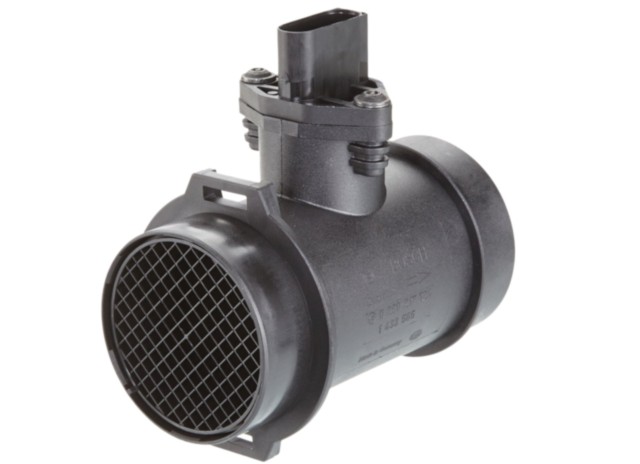 The air-mass sensor, located immediately after the air filter, determines the oxygen content of the intake air. Since the amount of air inside the combustion chamber decides the amount of emissions, this sensor is essential. It uses a heated sensor film or diaphragm over which the aspirated air flows. Its temperature profile is taken by sensors at either end. The stronger the air flow, the higher the temperature difference between the measuring fields, allowing an accurate air-flow digital feed to the engine control unit.
The air-mass sensor, located immediately after the air filter, determines the oxygen content of the intake air. Since the amount of air inside the combustion chamber decides the amount of emissions, this sensor is essential. It uses a heated sensor film or diaphragm over which the aspirated air flows. Its temperature profile is taken by sensors at either end. The stronger the air flow, the higher the temperature difference between the measuring fields, allowing an accurate air-flow digital feed to the engine control unit.
Oxygen Sensor or Lambda Sensor (λ)
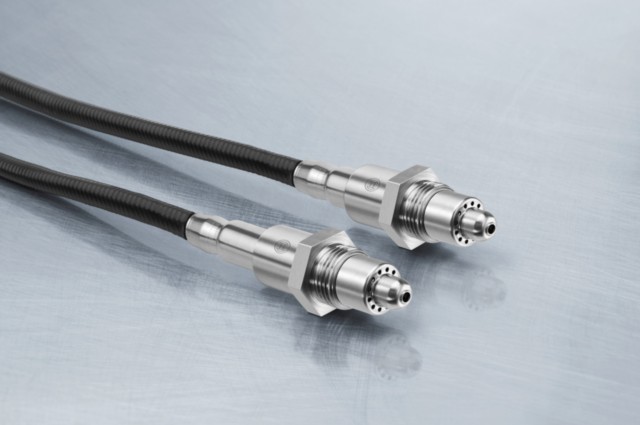 The exhaust oxygen sensor, also known as the Lambda sensor, primarily detects if the engine is running a lean or rich mixture. It is responsible for maintaining a closed-loop control of inducted air to fuel ratio. The Lambda sensor, situated in the exhaust pipe, is a solid-state electrolyte, galvanic oxygen concentration cell with its reference electrode exposed to the atmospheric air and the other electrode exposed to exhaust gas. The disparity in oxygen concentration at the electrodes produces an output voltage that fluctuates sharply in response to variation in inducted air to fuel ratio. Thus, based on the voltage produced, it signifies to the control unit whether the mixture is lean or rich.
The exhaust oxygen sensor, also known as the Lambda sensor, primarily detects if the engine is running a lean or rich mixture. It is responsible for maintaining a closed-loop control of inducted air to fuel ratio. The Lambda sensor, situated in the exhaust pipe, is a solid-state electrolyte, galvanic oxygen concentration cell with its reference electrode exposed to the atmospheric air and the other electrode exposed to exhaust gas. The disparity in oxygen concentration at the electrodes produces an output voltage that fluctuates sharply in response to variation in inducted air to fuel ratio. Thus, based on the voltage produced, it signifies to the control unit whether the mixture is lean or rich.
Catalytic Converter
The exhaust pipe’s duties have increased from doing more than simply diverting the waste gases from combustion away from the engine. It must also treat them to ensure no harmful toxins flow out and into the air we breathe. An important device for vehicle emission control, the catalytic converter (cat-con) uses a catalyst to break down the toxic gases before they are released into the air from the exhaust stream. In new bikes, it is a honeycomb metal structure that incorporates precious metals such as palladium, rhodium, or platinum into its surface. These metals convert poisonous carbon monoxide (CO) and unburned hydrocarbons (HC) found in exhaust gases into non-toxic carbon dioxide (CO2) and water vapour (H2O).
Conformity of Production (CoP)
To round things off and ensure compliance to the new norms, there will also be a conformity of production (CoP) conducted as frequently as every three months if the production exceeds 1.5 lakh vehicles every six months. Three samples will be required to comply with the norms in force. The CoP for two-wheelers where more than 10,000 to 1.5 lakh are produced will be every six months, whereas those less than 10,000 would entail a yearly CoP.
Fuel Quality
What good are advanced emission control devices if the quality of fuel lags behind and alerts the knock sensor? As with BS4 in 2017, the new BS6 norms will require the introduction of higher-quality fuel as well. This means a minimum Research Octane Number (RON) of 95.0 and Motor Octane Number of 85.0. The density must be between 743 and 756 kg/cubic metre. Also, the maximum permitted amounts of sulphur (S), phosphorus (P), lead (Pb) and copper (Cu) corrosion have also been reduced. Ethanol content is specified between 4.7 and 5.4 per cent V/V. However, with the possibility of a new variety of ethanol-blended petrol or even ethanol fuel looming over the horizon, we have to wait and see what more turns up on this potential development.
Of course, none of this will make a huge difference if we don’t get old vehicles off the road. Existing vehicles that have visible emissions – blue smoke, etc – need to be checked and rectified immediately. These are extremely harmful compounds and, with the number of such vehicles on the road, pose a danger to health at large.
Data Source: ARAI
Component Images: Bosch Automotive

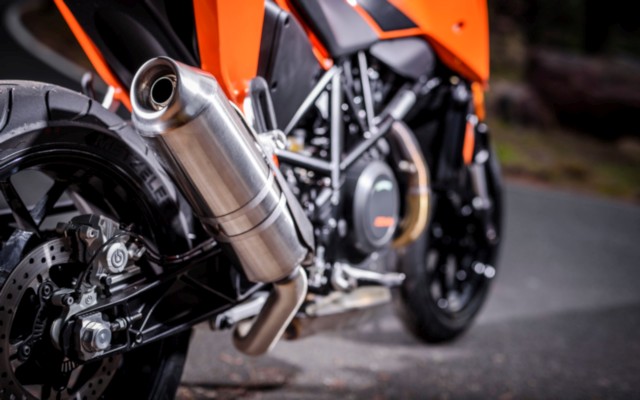
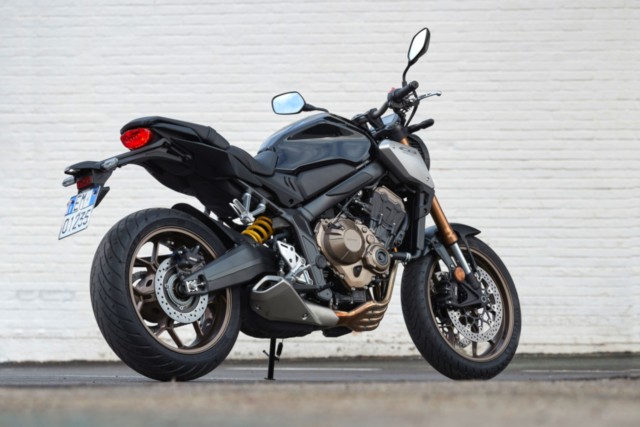
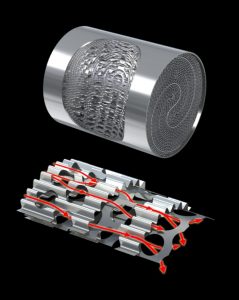

Leave a Reply